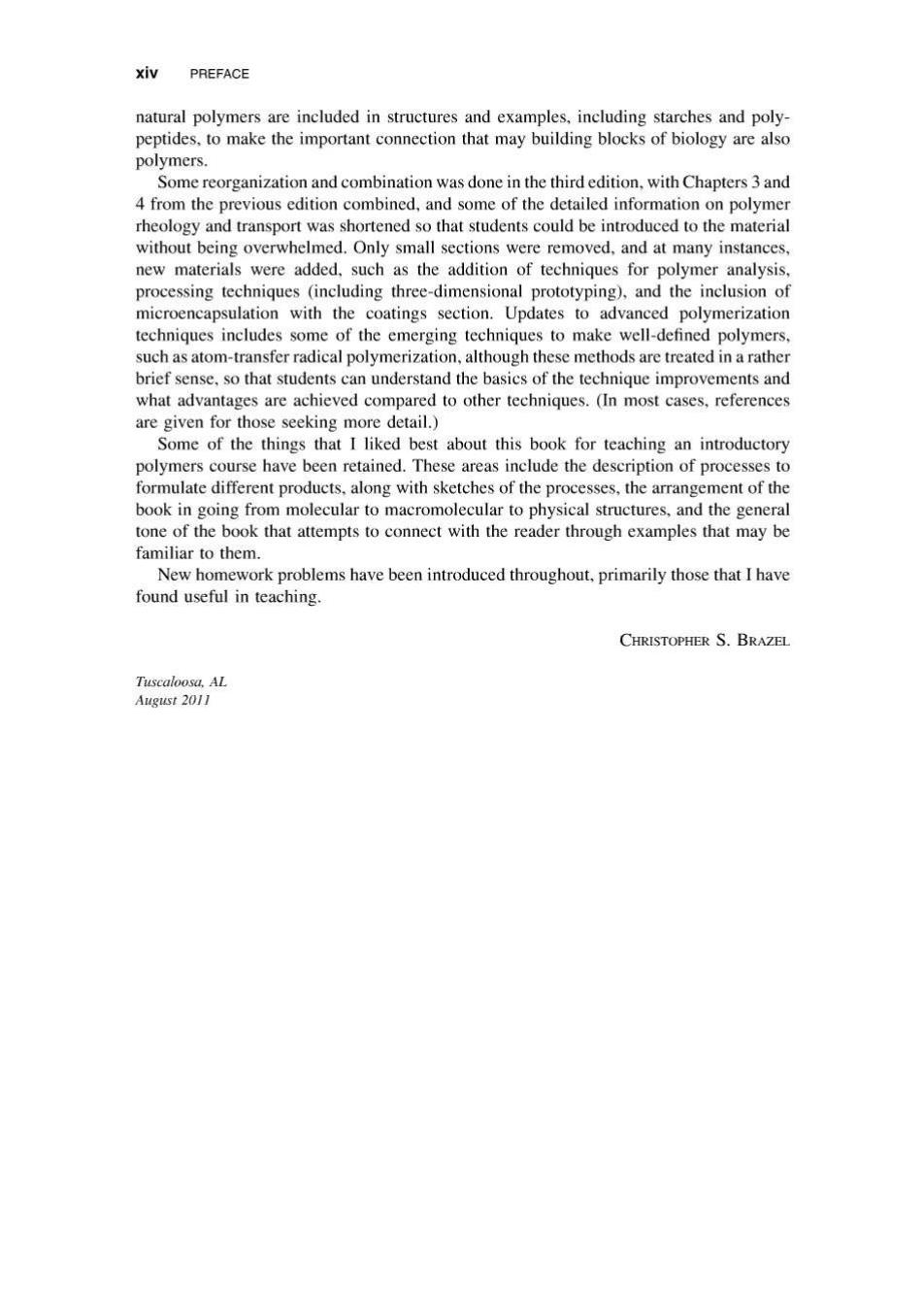正在加载图片...

xiv PREFACE natural polymers are included in structures and examples,including starches and poly- peptides,to make the important connection that may building blocks of biology are also polymers. Some reorganization and combination was done in the third edition,with Chapters 3 and 4 from the previous edition combined,and some of the detailed information on polymer rheology and transport was shortened so that students could be introduced to the material without being overwhelmed.Only small sections were removed,and at many instances, new materials were added,such as the addition of techniques for polymer analysis, processing techniques (including three-dimensional prototyping),and the inclusion of microencapsulation with the coatings section.Updates to advanced polymerization techniques includes some of the emerging techniques to make well-defined polymers, such as atom-transfer radical polymerization,although these methods are treated in a rather brief sense,so that students can understand the basics of the technique improvements and what advantages are achieved compared to other techniques.(In most cases,references are given for those seeking more detail.) Some of the things that I liked best about this book for teaching an introductory polymers course have been retained.These areas include the description of processes to formulate different products,along with sketches of the processes,the arrangement of the book in going from molecular to macromolecular to physical structures,and the general tone of the book that attempts to connect with the reader through examples that may be familiar to them. New homework problems have been introduced throughout,primarily those that I have found useful in teaching. CHRISTOPHER S.BRAZEL Tuscaloosa.AL Aug1s12011